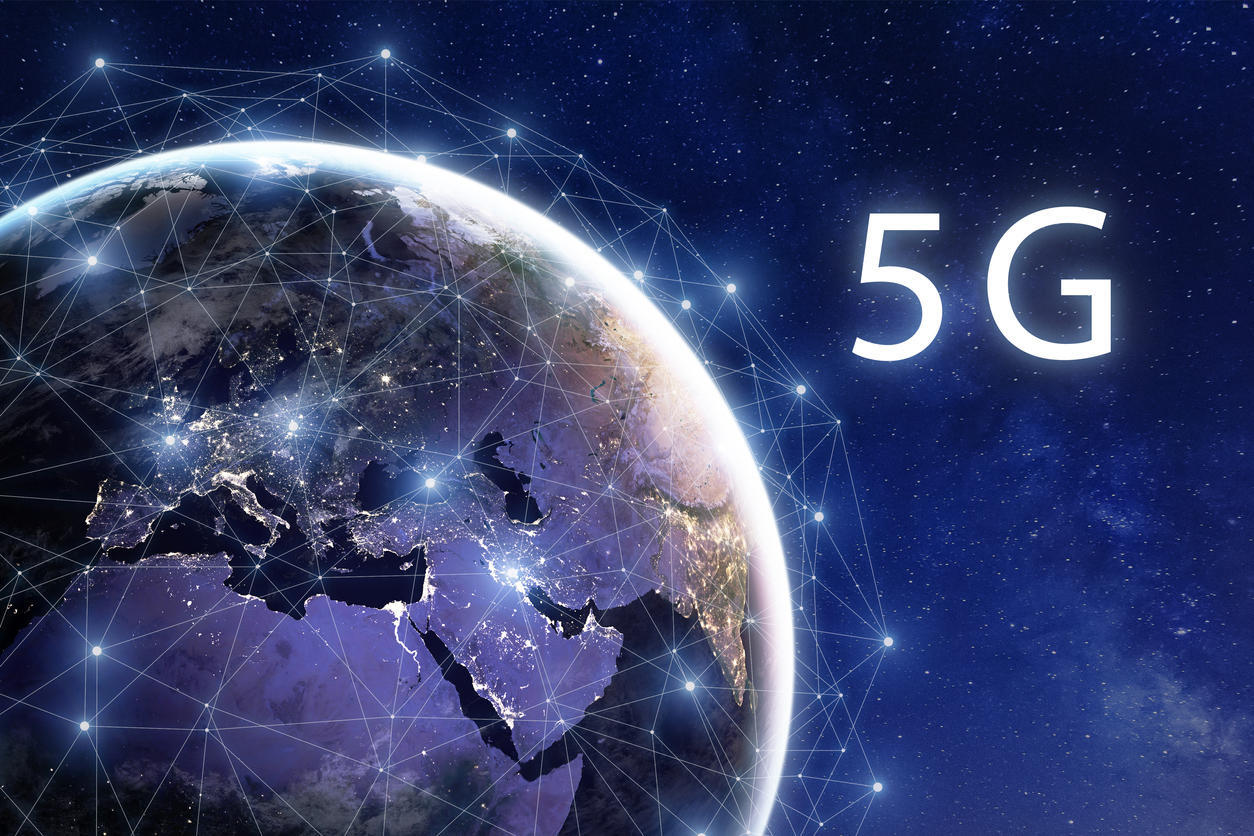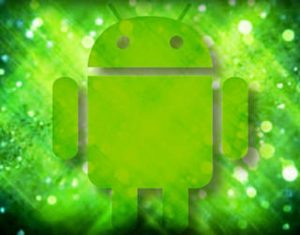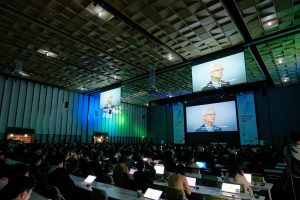How a robust 5G infrastructure can solve some of America’s biggest problems and (hopefully) convince the world that 5G is safe.

Image Getty Images/iStockphoto
The challenge for 5G in 2021 is to evolve from being the cool kid on the block to an employee who enables use cases across all industries. If 5G can help with the economic, health and environmental crises that the United States is facing right now, that will drive more investment in the infrastructure, more partnerships, and buy-in generally, according to one industry observer.
These changes will help businesses create new products, make it easier for individuals to access services, and even shut down lingering conspiracy theories.
Greg Kahn, CEO of the Internet of Things Consortium and GK Digital Ventures, said that he sees less appetite for the bells and whistles elements of 5G connectivity and more demand for practical use.
“I think the question is can it employ people and can it give people better access to healthcare, education and workforce training,” he said.
Kahn said it’s time to stop talking about tech for tech’s sake and shift the focus to the value it provides to individuals and businesses. He used the example of agri-tech as a way that 5G could help rural economies and potentially bridge the gap between 5G access in rural versus urban areas.
“5G can make a farmer’s fields more productive so they can sell more and help with risk management and worker safety also,” he said.
A new report from the CTIA and Boston Consulting Group makes the economic promise of 5G very clear: The report authors estimate that 5G has the potential to add $1.5 trillion to the United States’ GDP and create 4.5 million jobs in the next decade.
The CTIA published a new report in February, “5G Promises Massive Job and GDP Growth in the U.S.” The report authors recommended that the United States continue working toward additional licensed spectrum, particularly in the midband range, smarter and more efficient deployment policies, and a strong talent pipeline.
The report found that the U.S. is “a leader in making low- and high-band spectrum available for commercial wireless services but is still behind other countries in allocating midband spectrum.”
This is one of CTIA’s priorities this year, Nick Ludlum, the organization’s senior vice president and chief communications officer, said.
“We want to close the gap on midband spectrum but there is a lot more work to be done to make sure we have sufficient amounts of all three types to move this infrastructure forward,” Ludlum said.
Ludlum said that the big change in infrastructure is the installation of small cells which are the size of backpacks and are being installed on the sides of buildings and other locations around cities. 5G signals are not as strong as other frequencies so a strong 5G network requires numerous small cells. This increase in radio signals is what has sparked concern in some people.
Ludlum said that it’s understandable that people have questions about new technology. CTIA addressed these concerns on wirelesshealthfacts.com.
“The good news is that the international scientific consensus is that wireless networks and devices have not been shown to cause harm,” Ludlum said.
Just as concerns about the safety of vaccines started with some bad science, a lot of the concerns about 5G are based on discredited science, he said.
Environmental exposure and health risks
One of the concerns that people have about 5G is electromagnetic field exposure. There are two types of EMFs—ionizing radiation and non-ionizing radiation. X-rays use ionizing radiation while power grids and cell phone towers use non-ionizing radiation. As the research paper by Meese, Frith and Wilken explains, scientists and policyholders have said that non-ionizing radiation is safe. Government agencies have set exposure guidelines for non-ionizing radiation to protect human health. Conspiracy theorists and “fringe health advocates” think that these guidelines are not strict enough to limit human exposure to non-ionizing radiation to safe levels.
Scientists have studied non-ionizing radiation for decades and have not found a link between illness and exposure to that type of radiation. A recent study found that each 5G tower may result in overall lower radiation fields than those generated by current technologies.
Ankur Parikh, MD, the precision medicine program director at the Cancer Treatment Centers of America, said that he discusses environmental exposure with patients who wonder how they got cancer.
“However, usually this is very difficult to confirm as it is hard to measure true environmental exposure as well as directly state that the environmental exposure was a direct cause of their cancer,” he said. “There are certainly other potential causes such as diet, amount of exercise, genetics, etc., which could be a very relevant factor as well.”
Mary Ward, Ph.D., a researcher at the National Cancer Center Institute’s Division of Cancer Epidemiology and Genetics, said that many adverse health outcomes can be traced to inherited genetics, environmental exposures, but often the cause is unknown. Some of these environmental exposures are avoidable, like smoking or alcohol, while others may be involuntary or harder to avoid, such as air or water pollution, food contamination or job-related exposures. Also, these exposures are not distributed equally across geographic locations or socioeconomic status, Ward said.
Elizabeth Cahoon, Ph.D., another researcher at the National Cancer Center, said that studying these exposures is challenging because a large number of people experience them.
“Scientists investigate more heavily exposed occupational workers to understand exposure-associated risk,” she said. “In turn, they may be able to extrapolate from their findings the risks associated with lower exposures.”
Cahoon said there are two ways to think about risk from environmental exposures: Absolute risk and relative risk. Absolute risk represents an individual’s chance of developing a disease over a period of time and depends on how much the person has been exposed and how strongly that exposure is related to the disease. Relative risk compares the chance of developing an illness in an exposed group of people to the risk level in an unexposed group.
“For most common exposures that humans experience, the resulting risks for a specific chronic disease—including cancer—is relatively low,” Cahoon said.
Parikh said that day-to-day decisions will have more influence on a person’s overall health than environmental factors.
“Although certain environmental factors may increase the risk for developing certain illnesses, there is very little data to suggest a direct cause in most cases,” he said. “Maintaining an overall healthy lifestyle is the best way to have personal control and help reduce the risk of developing certain chronic medical problems.”
Why disinformation campaigns work
Three researchers took an extensive look at the conspiracy theories related to 5G in a research paper published in August 2020, “COVID-19, 5G conspiracies and infrastructural futures.” They found that fears about the dangers of non-ionizing radiation showed up in the 1990s and early 2000s. Now as 5G networks expand, “anti-5G campaigners are not just staying on the streets but are also attempting to engage with formal inquiries to advance their concerns,” the researchers found. Social media has made it easier for conspiracy theorists to spread misinformation about 5G much more quickly and easily.
Nick Biasini, a threat researcher at Cisco Talos, said that people encounter disinformation and misinformation daily, if not hourly. Topics are wide-ranging and include outright conspiracy theories tied to technology improvements like 5G. Biasini said that individuals and groups who spread misinformation usually work with highly charged topics and use emotion to elevate the message.
“Readers and users of these platforms can help to stem the tide by taking a few minutes to pause, breathe, and think before sharing a headline or a story,” he said.
Sharon Dunwoody, a professor emerita of journalism and mass communication at the University of Wisconsin Madison, said more information about how 5G works won’t necessarily shut down conspiracy theories.
“Individuals who have embraced this conspiracy narrative are doing so primarily because others in their ‘tribe’ have done so,” she said. “The power of primary group affiliation can be quite strong, and it can shut down a person’s openness to information that seems to contradict the group’s beliefs.”
Dunwoody said that explanations of how technology works typically have the most influence over people who are actively researching a particular topic.
“When it comes to killing off conspiracy theories, I’ve seen a different kind of intervention where you use one-on-one conversation to interact with people who have these theories,” she said.
Dunwoody said that the people who are the most receptive to persuasive messages are people who are on the fence about a particular issue.
“For people who are thinking, ‘I’m not sure about this,’ that’s where information can have a significant impact if it comes from a highly trusted source,” she said.
Biasini said that it’s now practically impossible to stop the problem and efforts may be better spent educating people how to tell the difference. Biasini recommends taking time to read up on a subject before sharing information that has an emotional appeal or sounds hard to believe.
“If it’s linked to the 5G rollout, do some research on 5G. What is it? How is it being rolled out? Most importantly, does the story make sense?” he said.
The next step is to vet the source of the story and ask these questions:
- Is it from a reputable news organization?
- Are there multiple sources for the information?
- Does everything link back to a common origin?
- Is it primarily being covered on social media?
Biasini said that individual efforts are just as important as steps taken by social media companies to label suspect information.
Also see
Source of Article




